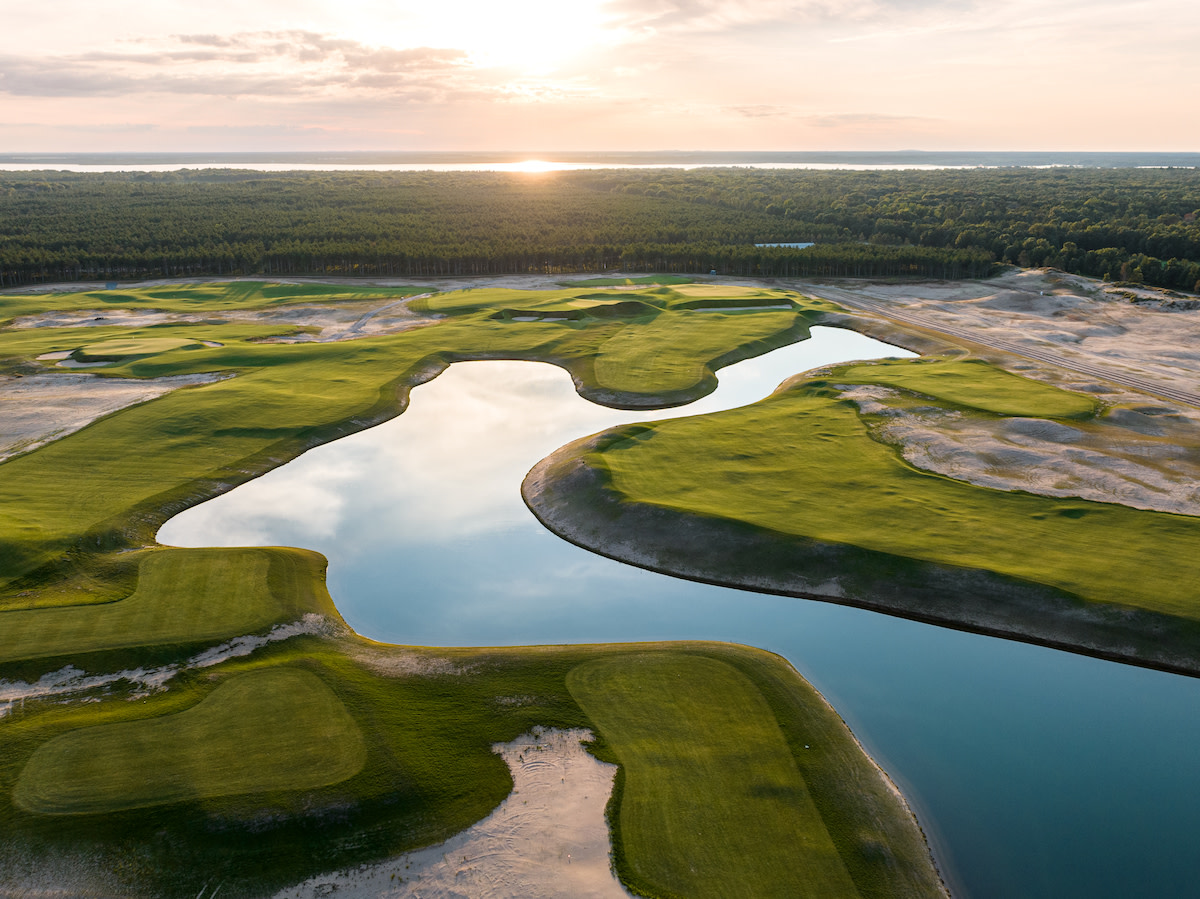The Lido Shuffles Back Into National Prominence

NEKOOSA, Wisconsin — The buzzwords for golf course architectural work tend to revolve around the three ‘Rs’ — renovation, restoration and replication.
But now there is a rare fourth ‘R’ — a painstaking and exacting reincarnation of the fabled Lido Golf Club.
The Long Island, New York, layout that was plowed over some 80 years ago and was once dubbed “the greatest course you will never play” by Golf Channel, appears to have risen like golf’s version of the Lost City of Atlantis from the sand dunes of central Wisconsin at the Sand Valley Golf Resort.
The original Lido opened in 1917, the handiwork of C.B. Macdonald with the help of design engineer Seth Raynor, plus Alister MacKenzie and others. The par-72 course that played to an astonishing 6,582 yards was a sight to behold until being acquired by the U.S. Navy in World War II and turned into a naval base.
Thanks to Mike Keiser, the visionary behind Bandon Dunes Resort in remote Bandon, Oregon, and his sons, the Lido is enjoying a comeback. This summer, the Tom Doak-designed replica opened nine holes for preview play and will have the additional nine holes ready in 2023. The holes now open for preview play are 3-5 — known as Eden, Channel and Cape — along with 12-17 (Long, Punch Bowl, Knoll, Short, Strategy and Redan).
For a few locals who have managed to play all 18 holes, the current course record is 77, but the experience for anyone interested in reliving golf’s history and golden era of architecture is magical, even awe-inspiring.
“I’ve done more than 100 tours of the Lido and the response is truly incredible,” said Brandon Carter, Sand Valley’s marketing and communication director. The course will have a private membership, but also limited play for Sand Valley Resort guests during the week, starting next year.
This Lido is a copy of Macdonald’s fabled design, right down to the hole shape, the contour and even wind direction and orientation. Thanks are given to three years of research by Chicago golf historian and financial consultant Peter Flory, who conducted extensive studies into the original Lido design.
He created a detailed replica of The Lido using The Golf Club video game. Flory pored through photos and other historical information to become one of the leading Lido and Macdonald experts and then presented the information to Michael Keiser Jr., who is overseeing the project with his father Mike and brother Chris.
“It’s truly remarkable to see what can be done by modern technology and original architectural plans,” says Derek Kelso, Lido’s operation manager.
The original Lido was designed by Macdonald, a Canadian who learned his craft in Scotland under the tutelage of Old and Young Tom Morris before coming to America and earning the reputation as the father of modern golf course architecture.
Technically, Doak is handling this remake, but only under the strict guidelines and plans left by Macdonald and researched by Flory. So detailed was the Lido research that greens or bunkers had to be moved a couple of feet, such as the 15th green according to Carter when they didn’t match the original topographical drawings.
The only significant change came on the 5th green, which was moved back 20 yards as a safety hazard from drives off the 13th tee. Otherwise, golfers today will be playing the exact same layout as the Lido of the early 1910s.

Doak used GPS-guided tractors, which could grade the sand-filled layout down to the millimeter. About the only thing missing from the original Lido layout is the Atlantic Ocean off the Long Island Sound. The only addition is 17 houses on the outskirts of the Wisconsin facility and a sold-out membership that paid a reported $50,000 each.
What sets the course apart, like most of golf’s great layouts, is that there isn’t a signature hole or holes, but a stout championship layout from beginning to end.
“It’s visually deceptive,” Kelso says. “The best thing you can do is trust your caddy.“
The course can trick one in many ways. Blind bunkers, false fronts — 40 yards in some places. But all the great Macdonald design classics are here, like the Alps, the Redan, The Hogback, the Dog’s Leg and the Punch Bowl.
The original Lido was started in 1914, but progress was slow due to World War I and, as George Bahto, who wrote about Macdonald's life and work in "The Evangelist of Golf," notes "It was not until 1917 ... that Lido was finally complete. The course had its official opening the following year." The course, which was overlooked by a massive wooden clubhouse, was quickly considered to be one of the great courses in the U.S.
The course featured 16 template hole designs that Macdonald learned from the Morrises in Scotland, while a magazine contest allowed for two holes to be designed by winners. One winner was MacKenzie, who later designed Cypress Point and Augusta National, and Tom Simpson who did work on Ireland’s Ballybunion and Scotland’s Royal Aberdeen.
The Lido began to fall into disrepair after the stock market crash of 1929. Many of its early members were having to scale back during the Great Depression. During World War II, the U.S. Navy took over the course in 1940 for bombing and landing test runs and the course disappeared seemingly forever.
Today, condos and a senior citizen center sits on land where the original Lido course in Long Island was constructed.
But now it’s back, in all its golfing glory and soon to be available to all golfers with a chance to experience, once again, golf’s restored historical gem.
